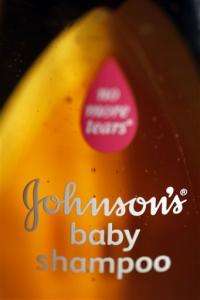J&J removing harsh chemicals from products by 2015

(AP) — Johnson & Johnson plans to remove trace amounts of potentially cancer-causing and other dangerous chemicals from nearly all its adult toiletries and cosmetic products worldwide in less than four years.
The health care giant late last year pledged to remove "chemicals of concern" from its baby products after being pressed to do so by a large coalition of health and environmental groups.
The company told The Associated Press in an exclusive interview Tuesday that it remains on track to have baby products, including its Johnson's No More Tears baby shampoo, reformulated with safer ingredients by the end of 2013. Adult products will be reformulated by the end of 2015.
"We want people to have complete peace of mind when they use our products," said Susan Nettesheim, vice president of product stewardship and toxicology for J&J's consumer health brands.
The company also makes prescription drugs and medical devices.
The Campaign for Safe Cosmetics began pushing J&J in May 2009 to remove harsh and toxic chemicals from its brands to protect consumers and workers. The coalition includes more than 175 nonprofit groups representing about 1.7 million members, from the Environmental Working Group and Friends of the Earth to the American Nurses Association and Physicians for Social Responsibility.
"This is a good step in the right direction," said Lisa Archer, the campaign's national director. "In terms of the cosmetic giants, Johnson & Johnson is going the furthest of any of them in removing chemicals of concern."
Archer said her group now will renew its push for several major cosmetics companies with bigger market share than Johnson & Johnson to commit to making their products safer.
Johnson & Johnson on Wednesday launched a website, www.safetyandcarecommitment.com, telling consumers what it does to ensure its ingredients are safe and of high quality. That includes detailed questioning of manufacturers and suppliers covering everything from the composition of ingredients and any trace chemicals in them to their environmental health and safety practices.
"We've heard from consumers that they want to understand more about our plans" for improving products, Nettesheim said. "They want more transparency."
Research by the Environmental Working Group found most cosmetic and personal care products — other than those from small companies in the fast-growing natural products niche — contain potentially dangerous chemicals.
The U.S. Food and Drug Administration doesn't heavily regulate cosmetic products.
The key chemicals in question are 1,4 dioxane and the preservative formaldehyde, which is slowly released by a chemical called quaternium-15 to kill bacteria. Both 1,4 dioxane and formaldehyde are probable human carcinogens; formaldehyde also is a skin, eye and respiratory irritant.
By 2015 Johnson & Johnson will phase out those two chemicals and others of concern, including triclosan, phthalates and parabens, as well as fragrance ingredients, which aren't disclosed on product labels. However, it will allow chemicals that release formaldehyde when no safe alternative will work and is reducing levels of 1,4 dioxane to below 10 parts per million.
Nettesheim said the effort is taking several years for a few reasons. The company has many different formulas for products sold in different countries around the world — including some safer formulas in products long sold outside the U.S. Each ingredient replacing an objectionable one must go through quality testing and be evaluated by volunteer consumers. And many must be registered with government agencies.
J&J said that since 2010, it's reduced the number of products containing chemicals that release formaldehyde by 33 percent and the products that contain 1,4 dioxane by 74 percent.
The Campaign for Safe Cosmetics has issued multiple reports documenting its concerns, available on its website, www.safecosmetics.org. The site has links to tips on shopping for the safest products and a searchable database with information on ingredients and potential hazards of about 75,000 personal care products.
The moves by Johnson & Johnson come as it tries to restore its image after an embarrassing, costly series of more than 30 product recalls since 2009, mostly of consumer products including nonprescription Tylenol, Motrin and Benadryl.
Problems ranging from wrong levels of active ingredient and nauseating package odors to tiny shards of glass and metal in liquid medicines forced the company to gut and rebuild a consumer health products factory in Pennsylvania. That factory and two others are getting extra scrutiny under an agreement with the FDA.
Copyright 2012 The Associated Press. All rights reserved. This material may not be published, broadcast, rewritten or redistributed.














